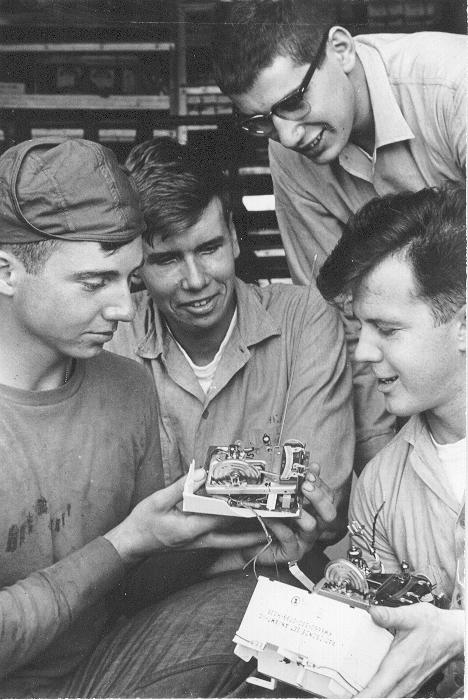CREW'S STORIES
RETURN TO:
USS BENNINGTON CATCHES
IT'S OWN WEATHER BALLOON RADIO
John Carobine
Formerly AA through AG2 aboard the USS Bennington
LT USN, (Ret.)
I transferred to the Bennington directly after boot camp and reported aboard in April of 1967 as an Airman Apprentice. I spent two years aboard her and left in May of 1969 as an AG2. I worked in the weather office in OA Division and my first assignment was on the radiosonde team. Our job was to launch two balloons per day; 12 hours apart to get upper air information in terms of air pressure, temperature and humidity levels.
On this particular cruise in October – November 1967, we were on our way from San Diego to an area near Midway Island, via Pearl Harbor. We were serving as the main recovery ship for the Apollo IV capsule launch. This was an unmanned mission to test the redesigned space capsule after the fire on the launch pad that past January.
Out in the middle of the Pacific, we had launched our first balloon of the day at 1200Z, which was in the dark of night where we were located. Launching a weather balloon back then was always a crapshoot. The balloons, made out of latex, forced you to be careful when filling them with helium. Doing it too fast or bumping the balloon on a sharp object would either result in a burst balloon and the need to start again. In addition, the radiosonde used a water-activated battery and you could never be sure they would always work. Some batteries would quit before you even got the balloon up to the flight deck for launch.
However, with this launch, all went well with the sounding and we tracked it up to around 50,000 feet or so and then lost the radio signal from the radiosonde. This was about average for balloon soundings from the Bennington. Since we were out in the "middle of nowhere" we were not required to put a parachute on the balloon and radiosonde to slow its descent back to earth after the balloon bursts.
Typically, the helium gas in a weather balloon expands as the balloon goes higher and higher in the atmosphere. At an indeterminate point, the balloon simply pops and the whole shebang falls back to earth. We didn't need a parachute since we were a good 1,000 NM or more out to sea. How could it possibly hit anything?
Well, it did! One of our division mates woke us up a few hours after our balloon launch and told us that "something" had been found on the flight deck and they wanted us to look at it.
An Airman Benson (either from HS-8 or one of the VS squadrons) had found a smashed radiosonde on the flight deck near one of the aircraft from his squadron.
During assembly, each radiosonde has a unique serial number assigned to it. We were able to match the serial number from our balloon launch logbook to the serial number of the smashed radiosonde as being the one we had launched many hours earlier!
What made this so whole thing so unique was that the Bennington had made several course turns and speed changes. During those maneuvers, we had launched the radiosonde, tracked it for an hour or more and then lost it as the signal faded out. We naturally expected it to just burst and fall into the ocean. Somehow, though, when the balloon burst, it managed to come back down and hit the ship! Out in the middle of the Pacific! Figure the odds!

Here is a picture of us three AG's on the balloon team, plus Airman Bensen looking at the smashed radiosonde. I’m the guy with glasses standing over the shoulder of AGAN Bill Beach (in the middle) and AG3 Jim Fletcher. On the left, holding the wayward radiosonde is AN Bensen.
Our story appeared in the “Tafferail Talk” page of All Hands Magazine a few months later. I wish I would have clipped out that article so I could have scanned it in also.
How’s that for a real “sea-story” shipmates? Best wishes to all.
John Carobine
Formerly AA through AG2 aboard the USS Bennington
LT USN, (Ret.)
RETURN TO: